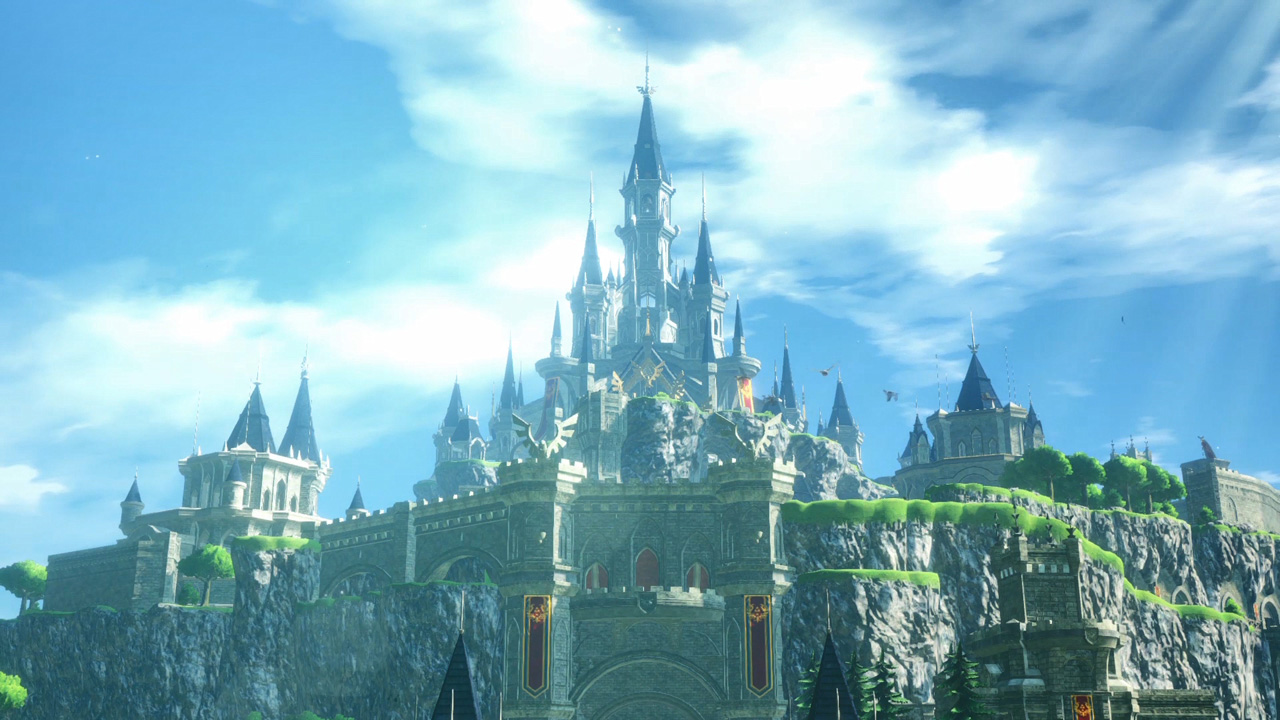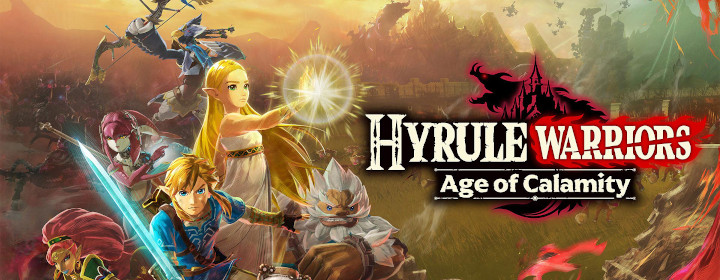I’ve always wondered what it means to me to “finish” a game. It is a concept that has changed for me throughout the years. When I was younger it was much simpler. It meant I had 100%’d a game and I already had a new one to play. I had fewer games back then, so new game season was always during Christmas or my birthday (luckily, both 6 months apart). I stumbled upon this while playing Hyrule Warriors.
But now it’s different. As a 30 year old, my time/energy/money balance doesn’t favor time as much. Sales and now Game Pass mean that the amount of games I can play at any given time far exceed the time I have to 100% all of them. And yet, I don’t really feel comfortable just getting to the end and moving on. There needs to be a clearly defined point when I feel I have fully experienced a game. I have similar issues with my reviews, which fortunately means I play longer than the average reviewer and it shows.
Hence the reason I will be creating these postmortems. From now on, this will be my way of sharing my opinions on a game as I close the chapter and move on in my gaming career. Keep in mind that this is not a review, so there will be aspects of the game I will discuss and others I won’t mention.
My favorite Zelda universe
It isn’t uncommon to hear someone label Breath of the Wild as their favorite Zelda game. It might be a little less common for someone who grew up with Link to the Past as I did, though. Yes, this means that I also grew with classics like Ocarina of Time and Majora’s Mask. I still prefer Breath of the Wild’s world.
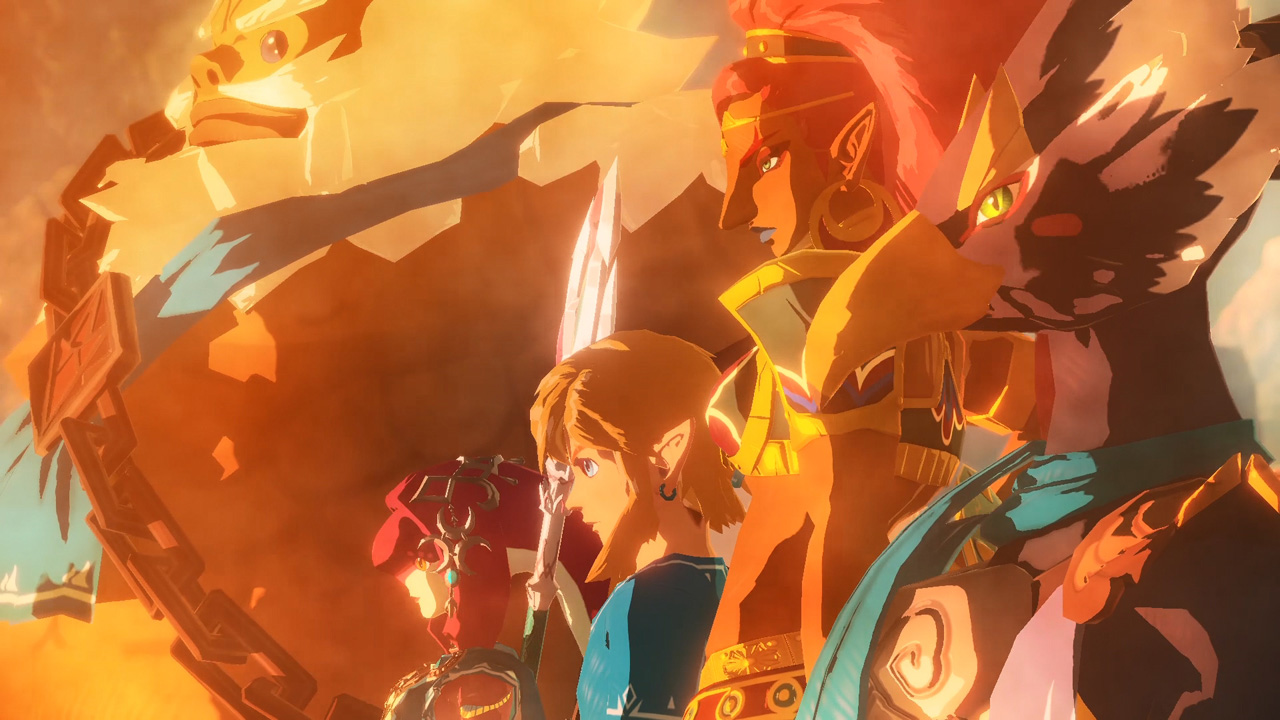
The reasons are something that I might write about on another occasion. For now, let’s just say that Breath of the Wild is a game that came to me in the perfect moment in my life, and the tale of calamity, fallen heroes and courage is something that resonated with me.
Several people were disappointed that this wasn’t BotW2. It never tried to be BotW2. Warriors games are definitely an acquired taste. Luckily for me, it is one I have acquired already. Coincidentally, I acquired it through Hyrule Warriors on the 3DS.
All the pieces are definitely in place for me to have the time of my life with Hyrule Warriors: Age of Calamity.
Not warriors or BOTW, but something in between
What I liked about this game is how narrative based it is. Despite it being a Warriors game, I fully expected it to have a heavy dose of lore into the age of calamity and I was not disappointed. It felt great to go through Hyrule 100 years in the past and have a chance to connect with the champions while they were alive. Being involved in their recruitment and seeing them in battle was nothing short of exhilarating.
Also, seeing the divine beasts wreak havoc was a fantastic experience. One of the things I didn’t like as much about BotW is how the beasts were basically just a dungeon and then a laser turret when fighting Calamity Ganon. It never managed to convey their greatness and why they would have tipped the battle in favor of our heroes 100 years ago, but Age of Calamity did them justice. The way their maps involve going through thousands of enemies is the perfect way to display their might.
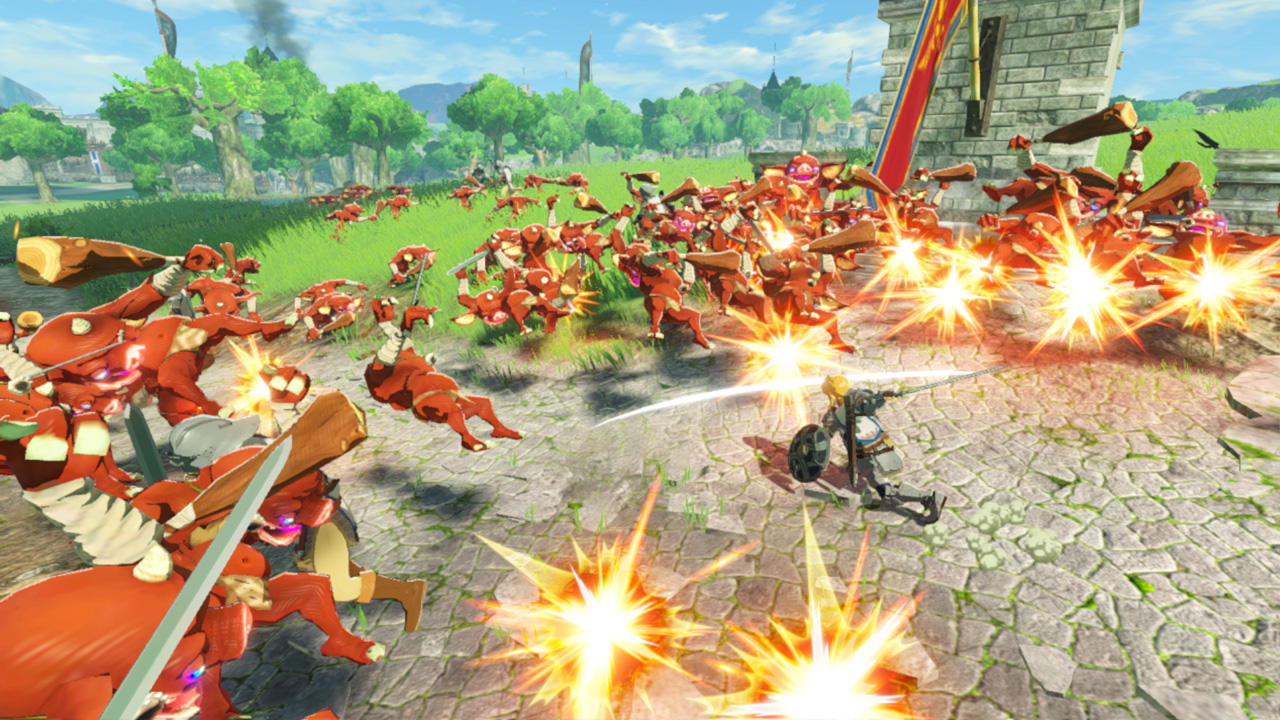
The little guardian plot twist was not what I wanted from the story. I was hoping to have the game end with the final defeat of our Hyrule heroes that sets in motion the events of BotW, but having time travel meant that there was a possibility of splitting the timeline. It makes sense to alter elements in order to get a “happy” ending, but I really wanted it to be the same timeline. I do wonder if this will give way to additional titles in the BotW universe in different timelines like when OoT originally split the timeline in 3.
Adventure and story all in one
Unlike Hyrule Warriors, there’s no adventure mode in Age of Calamity. Instead, it is ingrained into the main story mode and spread throughout the BotW map. The idea of being all around Hyrule doing missions and helping the townsfolk is something I thoroughly enjoyed. It fleshed out the concept of being the heroes of Hyrule and fighting the calamity all as one.
The way heroes are upgraded felt like a breath of fresh air from the badge market. Even though the concept is very similar (exchanging materials for a reward), it also gives insight into the heroes and their ordeals. This approach also made me actually go and look for materials to upgrade a certain aspect, something which I wouldn’t have done for the previous system. I like completing tasks.
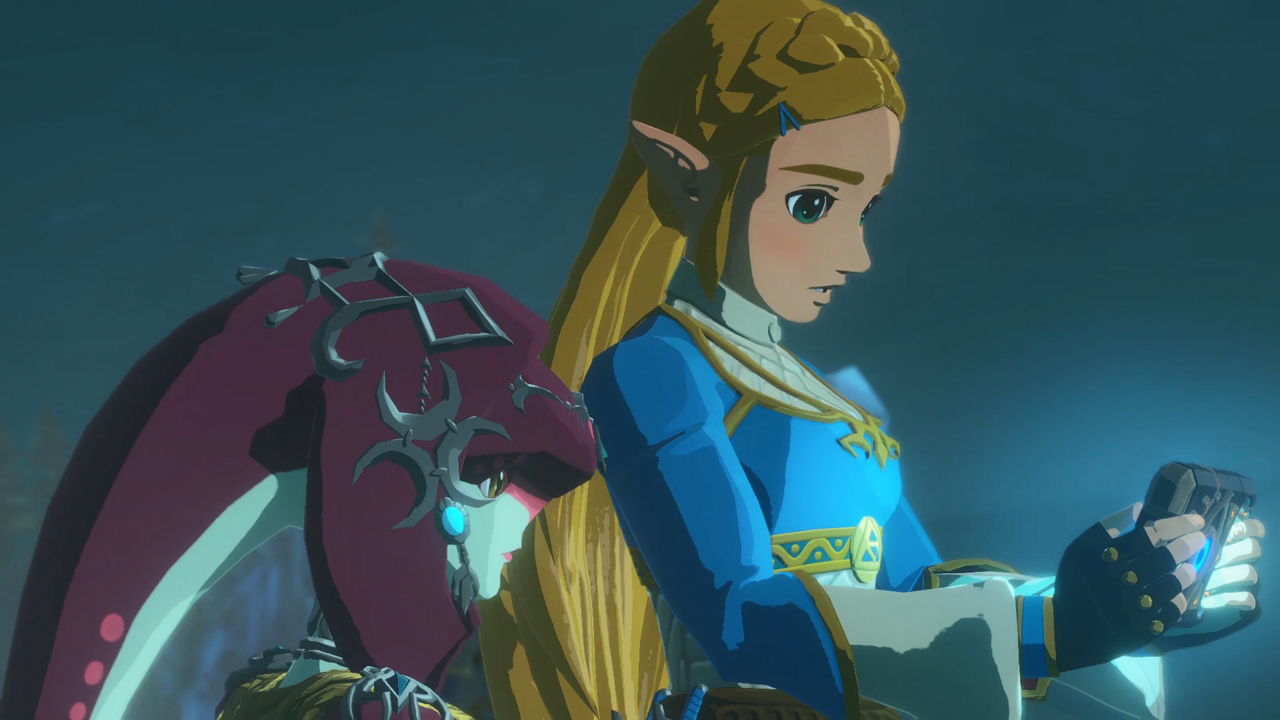
The one element I didn’t like was the time limit of some missions. This is just me nitpicking, but I found myself unable to complete certain missions when using the recommended level on hard difficulty. A particular Yunobo mission seemed impossible with the recommended conditions. There just wasn’t enough damage to finish on time, but maybe the recommendation only applies to the original difficulty.
Currently, I’m still not 100% done with the map and the quests. I have several of them ready to go and the post game stuff, but I’m purposely leaving that out in case there is a future update.
Performance woes
The biggest downside of this game is its performance on the Switch. You might have heard how the FPS fluctuates all over the place and that’s completely true. The style of BotW doesn’t seem to be made with the expectation of tens of enemies on screen. Or maybe it was deemed “good enough”. Either way, I found the performance issues to range from meh to borderline unplayable.
I found handheld mode to feel better for me, so I stuck with that. I really hope an update introduces at some point a “performance” mode that uses the handheld resolution in docked to get a boost in performance.
My issue with the framerate wasn’t that the game turned unresponsive or felt slow, it was actually the way it made my head hurt with its inconsistency. The unstable framerate makes it worse than if it was a stable but much lower framerate. I can stomach lower FPS counts, as long as they remain stable.
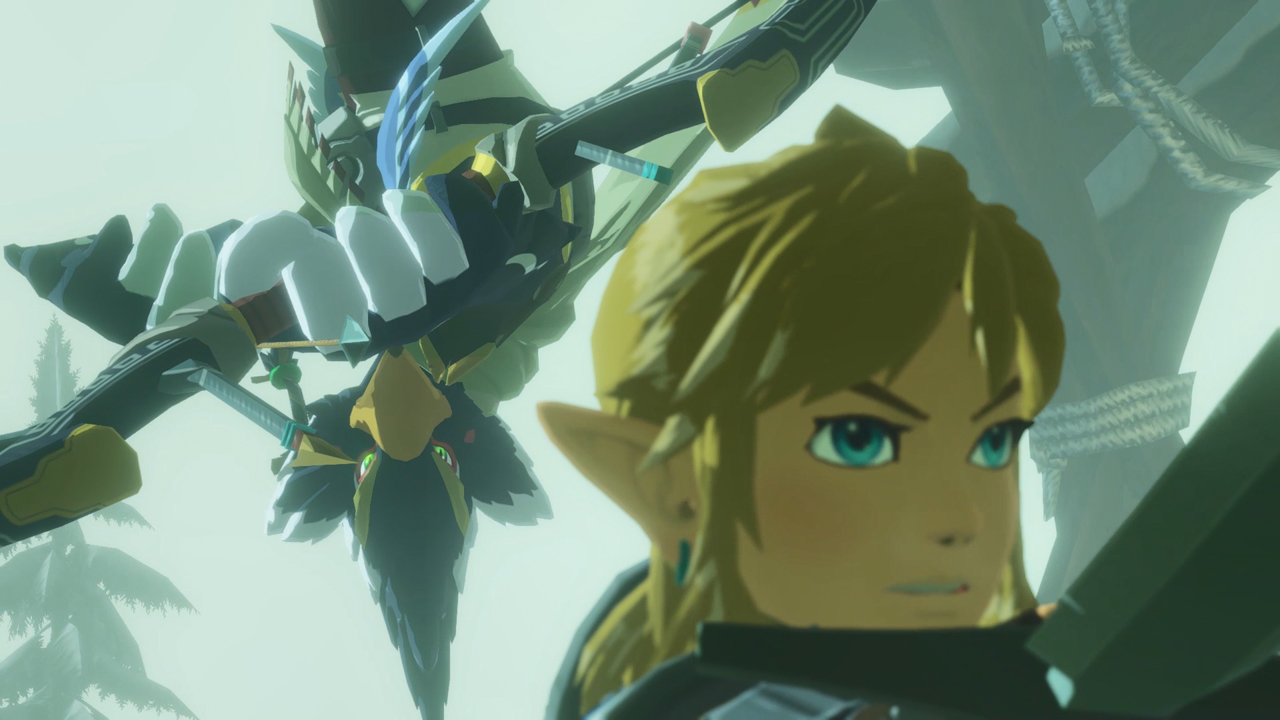
Camera
Oddly enough, the framerate wasn’t my most hated aspect, that spot goes to the camera. When the FPS is low, the camera moves in an unpredictable pace. Again, stable is better than unstable. The sudden and then slow camera movements also made my head hurt. It somehow makes the lower frame count much worse.
Apart from that, BotW maps were not meant for that style of camera. Some maps suffer from having the camera struggle to keep up from being behind you when close to walls or mountains. It makes it harder to read the screen and sometimes it even hides your character. Everything becomes much worse on narrow maps like Hyrule Castle where the camera can’t keep up and is a mess overall.
Both of the previously mentioned issues become much worse when you introduce bigger characters and bigger enemies. Big enemies like the Hinox are big offenders for camera issues. I get that the camera is the same as in BotW, but once again it seems to conflict with how it operates in this game.
Then there’s the bigger characters that also change your proportion in regards to the world. The world looks smaller and the camera has the same issues, but to a greater degree. I hope a future update fixes this issues.
Battle Systems
The one mechanics I never fully understood was the wall jump. I know how to perform it and the effect it has, but I can’t understand the benefit of it. If anything, my experience was the being airborne is an undesirable state for the most part. It makes you vulnerable to enemies because you can’t dodge, although you can do higher damage to weak points. Wall jumping also shuffles the camera in a strange way that is disorienting. I prefer to use a combo path that puts me airborne rather than wall jumping any day of the week.
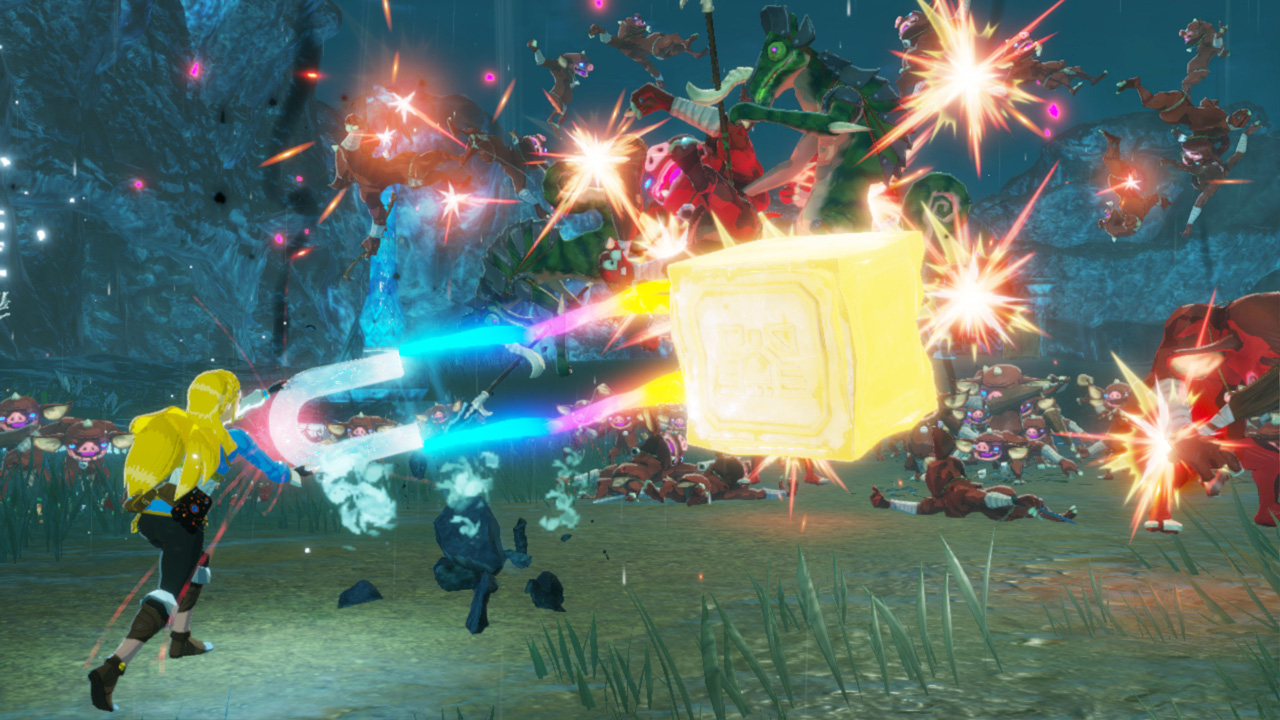
Then there’s the rune system. I like the system but dislike the implementation. Thanks to the loading tips, I found some really good stuff about the runes such as using stasis on exposed enemies or bombs to chip weak points. It actually gives it a nice layer of depth to combat, as you maximize their potential.
However, the runes have the weakness of being attached to a counter mechanic. Most mid and large enemies have attacks that must be countered by using the appropriate rune. The problem is that being ready to counter, means that you can’t use the runes for their intended effect or else they won’t be ready for when a counter is needed. This absolutely kills any depth the runes might have had, because it is always preferable to counter an enemy than to use their individual effects. Talk about invalidating your own mechanic.
It baffles me a little that runes share a cooldown instead of being separated like BotW. It would have made combat more interesting and also implement the same constraints as the original BotW.
The future champions
Finally, we have champions from the future arriving at a point during the story. I still have mixed feelings about this. On one hand, I loved being able to play as my favorite character: Sidon. On the other hand, I feel it undermines the legacy of the original champions. I know full well the reason behind this plot element was to add more characters and give it a little fan service, but this fan service runs opposite to the original purpose of Age of Calamity of showing the prequel story to BotW.
I guess I’m still not completely on board with time travel.
Last words
I’ll say that I really enjoyed Age of Calamity despite everything mentioned. I love the warriors genre, and you can be sure I did the thing and played a lot of missions while watching other stuff like the genre intends to. The grind was never boring and I enjoyed completing missions. I wish the performance was better. The rune limitations should be addressed as well. It is for that reason that I didn’t finish the map 100%. I have high hopes that a patch will be submitted to address the performance at the very least, so I’m leaving myself a good reason to come back later.
Overall, I definitely recommend Hyrule Warriors: Age of Calamity, it is a really good Warriors game!
